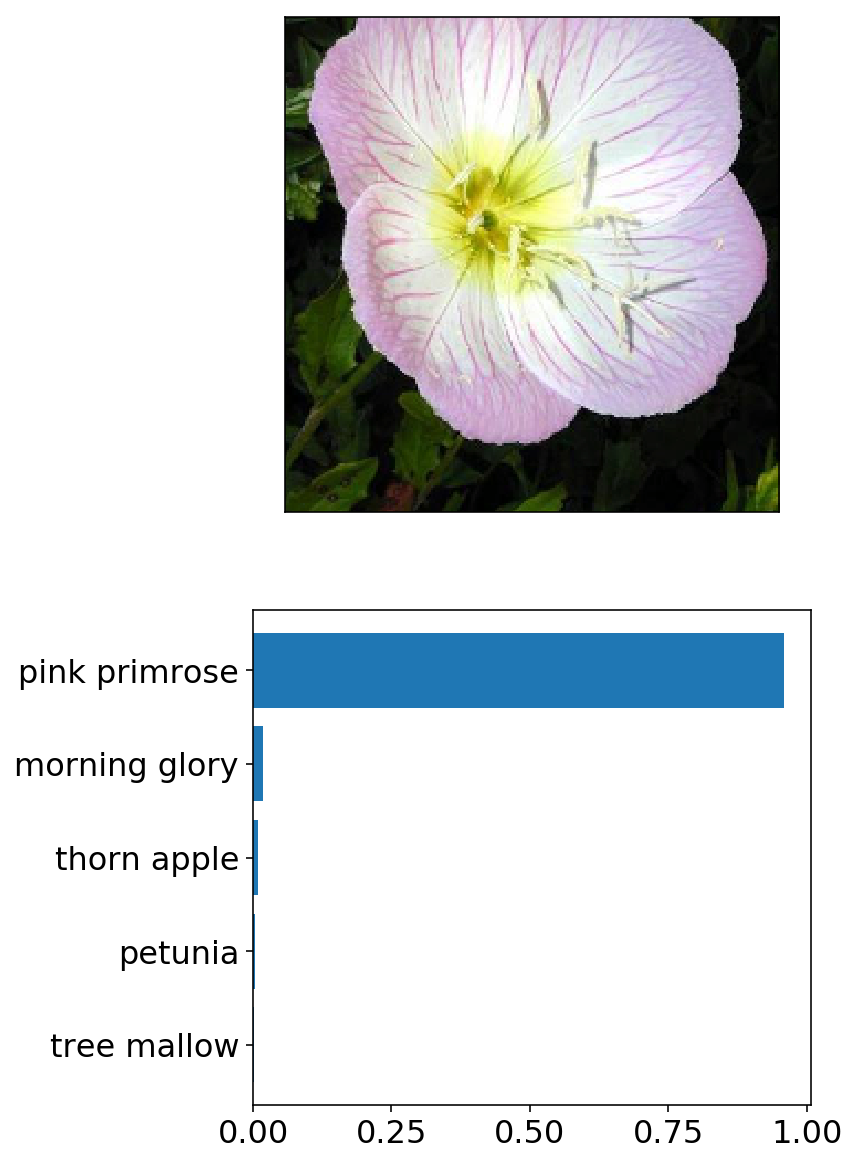This project uses convolutional neural network to train an image classifier that is able to identify 102 different flower species with 93% testing accuracy. This image classifier can be used to identify flower species from new images, e.g., in a phone app that tells you the name of the flower your camera is looking at.
Build an application to tell the name of flower from an image.
102 Category Flower Dataset was given by the Nanodegree program. This dataset contains images of 102 different flower species with lables. These images have different sizes.
Data file structure:
flowers: folder of image data.train,valid,test: subfolders for training, validating, and testing the image classifier, respectively.1,2, ...,102: 102 subfolders whose names indicate different flower categories. Given the large data size, data folders are not included here.
-
Data loading and data preprocessing
- Load image data
- Training set: apply transformations such as rotation, scaling, and horizontal flipping (model generalizes / performs better)
- All datasets: Resize and crop to the appropriate image size (required by pre-trained model)
- All datasets: Normalize image colors (RGB) using mean and standard deviation of pre-trained model
- Training set: data shuffled at each epoch
-
Build and train the model
- Load a pre-trained network
densenet121(reference) and freeze parameters - Define a new, untrained neural network as a classifier. The classifier has a hidden layer (ReLU activation) and an output layer (LogSoftmax activation). Assign dropout to reduce overfitting.
- Assign criterion (NLLLoss, negative log loss) and optimizer (Adam, adaptive moment estimation, reference)
- Train the classifier layers using forward and backpropagation on GPU
- Track the loss and accuracy on the validation set to determine the best hyperparameters
- Load a pre-trained network
-
Use the trained classifier to predict image content
- Test trained model on testing set (93% accuracy)
- Save trained model as checkpoint
- Write a function that gives top-5 most probable flower names based on image path
-
Build a command line application
- See below for details
-
train.py: Train the image classifier, report validation accuracy along training, and save the trained model as a checkpoint.-
Basic usage:
- Specify directory of image data:
python train.py flowers
- Specify directory of image data:
-
Options:
- Set directory to save checkpoints:
python train.py flowers --save_dir assets - Choose architecture:
python train.py flowers --arch "vgg13" - Set hyperparameters:
python train.py flowers --learning_rate 0.001 --hidden_units 512 --epochs 20 - Use GPU for training:
python train.py flowers --gpu
- Set directory to save checkpoints:
-
-
predict.py: Use the trained image classifier to predict flower name along with the probability of that name-
Basic usage:
- Specify file path of the image and directory name of saved checkpoint:
python predict.py flowers/test/1/image_06743.jpg assets
- Specify file path of the image and directory name of saved checkpoint:
-
Options:
- Return top K most likely classes:
python predict.py flowers/test/1/image_06743.jpg assets --top_k 3 - Use a mapping of categories to real names:
python predict.py flowers/test/1/image_06743.jpg assets --category_names cat_to_name.json - Use GPU for inference:
python predict.py flowers/test/1/image_06743.jpg assets --gpu
- Return top K most likely classes:
-
